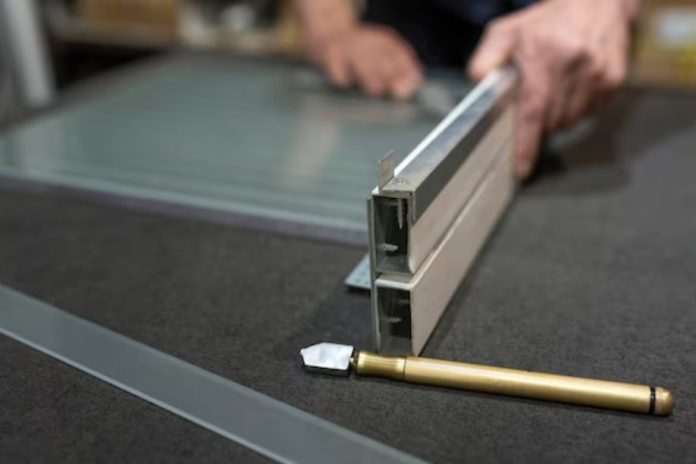Aluminium is one of the most versatile and widely used metals, featuring in everything from aircraft components to beverage cans. Among its many forms, aluminium flat bar stands out as a valuable material across various industries due to its unique properties. A flat bar is a long, flat piece of metal with uniform thickness, and when made from aluminium, it offers several advantages that make it an ideal choice for multiple applications.
This article explores the key benefits of aluminium flat bar in manufacturing, construction, transportation, and beyond. From its lightweight properties to its excellent corrosion resistance, this material plays an essential role in modern engineering and design.
Lightweight and Easy to Handle
One of the primary advantages of aluminium flat bar is its lightweight nature. Aluminium has a low density compared to metals such as steel or copper, making aluminium flat bars significantly lighter. This translates into multiple benefits:
- Reduced shipping and handling costs – Industries requiring large quantities of materials can save on transportation expenses.
- Ease of handling – Workers in construction or manufacturing can move, cut, and install aluminium flat bar with minimal effort.
- Improved assembly efficiency – The lightweight nature allows for easier manipulation, reducing labour time and costs.
Corrosion Resistance
Aluminium naturally forms a thin oxide layer on its surface, which protects it from corrosion. This makes aluminium flat bar an excellent choice for environments exposed to moisture, chemicals, or extreme weather conditions.
Industries such as construction, marine, and chemical processing benefit from this property, as aluminium flat bars can be used for:
- Outdoor structures – Ideal for window frames, railings, and gutters exposed to the elements.
- Marine applications – Perfect for boat building and offshore structures where saltwater resistance is crucial.
- Aerospace and automotive industries – Components last longer and require less maintenance due to resistance to rust and corrosion.
Excellent Strength-to-Weight Ratio
Despite being lightweight, aluminium flat bar does not compromise on strength. It offers an excellent strength-to-weight ratio, making it suitable for applications where durability and weight reduction are priorities.
Industries benefiting from this property include:
- Aerospace and automotive – Essential for improving fuel efficiency without sacrificing structural integrity.
- Construction – Used in frameworks, support beams, and structural components where strength is vital.
- Heavy-duty applications – Ensures reliability while keeping weight manageable.
High Formability and Versatility
Aluminium flat bar is highly malleable, allowing for easy cutting, shaping, welding, and machining. This makes it a preferred material for manufacturers and designers working on customised components.
Key applications include:
- Architectural designs – Used in facades, decorative trims, and structural elements.
- Industrial machinery – Can be fabricated into parts for different industrial processes.
- Composite structures – Easily combined with other materials for specialised applications.
Recyclability and Sustainability
Sustainability is a major consideration in modern industries, and aluminium is one of the most recyclable materials available. Aluminium flat bar can be recycled indefinitely without losing quality, making it an eco-friendly option.
Key environmental benefits include:
- Energy efficiency – Recycling aluminium requires only a fraction of the energy needed to produce new material.
- Lower carbon footprint – Companies can reduce emissions by incorporating recycled aluminium.
- Cost savings – Recycled aluminium is often cheaper, benefiting manufacturers and consumers.
Aesthetic Appeal
Beyond its functional benefits, aluminium flat bar has an attractive natural finish. Its sleek, silvery appearance makes it a popular choice for design-focused applications.
Common uses include:
- Architectural applications – Used for cladding, decorative trims, and modern interiors.
- Customised finishes – Can be anodised for additional corrosion resistance and colour customisation.
Thermal and Electrical Conductivity
Aluminium is an excellent conductor of both heat and electricity, making aluminium flat bars ideal for electrical and thermal applications.
Common uses include:
- Power distribution systems – Used in high-voltage cables and busbars.
- Heat exchangers and radiators – Helps improve heat transfer efficiency in cooling systems.
Cost-Effectiveness
Despite its many advantages, aluminium flat bar remains relatively affordable. Aluminium is abundant and easier to process compared to metals like stainless steel or titanium, keeping costs low.
Cost benefits include:
- Lower material costs – More economical than alternative metals.
- Reduced handling and shipping expenses – Lightweight properties lower transportation costs.
- Minimal maintenance – Durability reduces repair and replacement expenses.
Final Thoughts
Aluminium flat bar offers a host of benefits, making it an essential material across industries. Its lightweight nature, strength, corrosion resistance, versatility, and sustainability make it an invaluable resource for manufacturers, engineers, and designers alike.
From construction and automotive manufacturing to electrical engineering and decorative applications, aluminium flat bar continues to prove its worth as a reliable, cost-effective, and high-performance material. Whether you are working on an industrial-scale project or a small DIY task, the advantages of aluminium flat bar make it a material of choice for modern applications.








